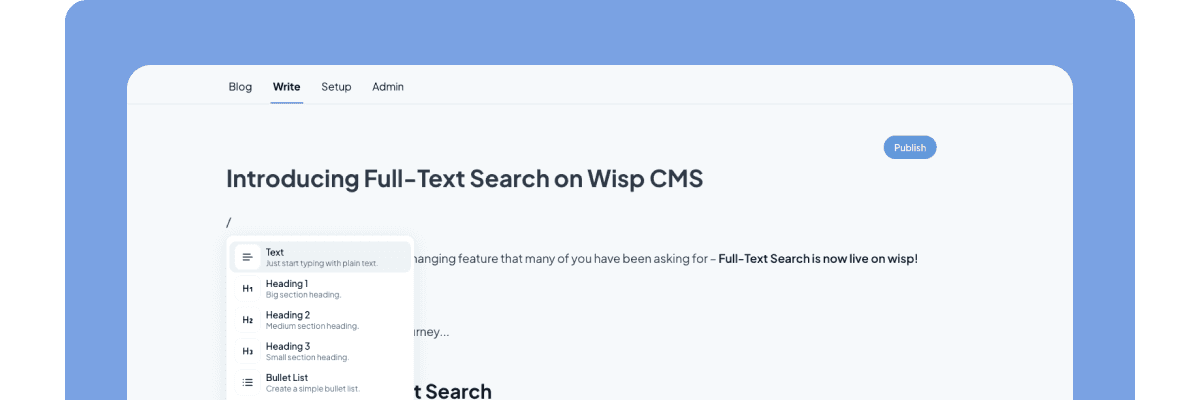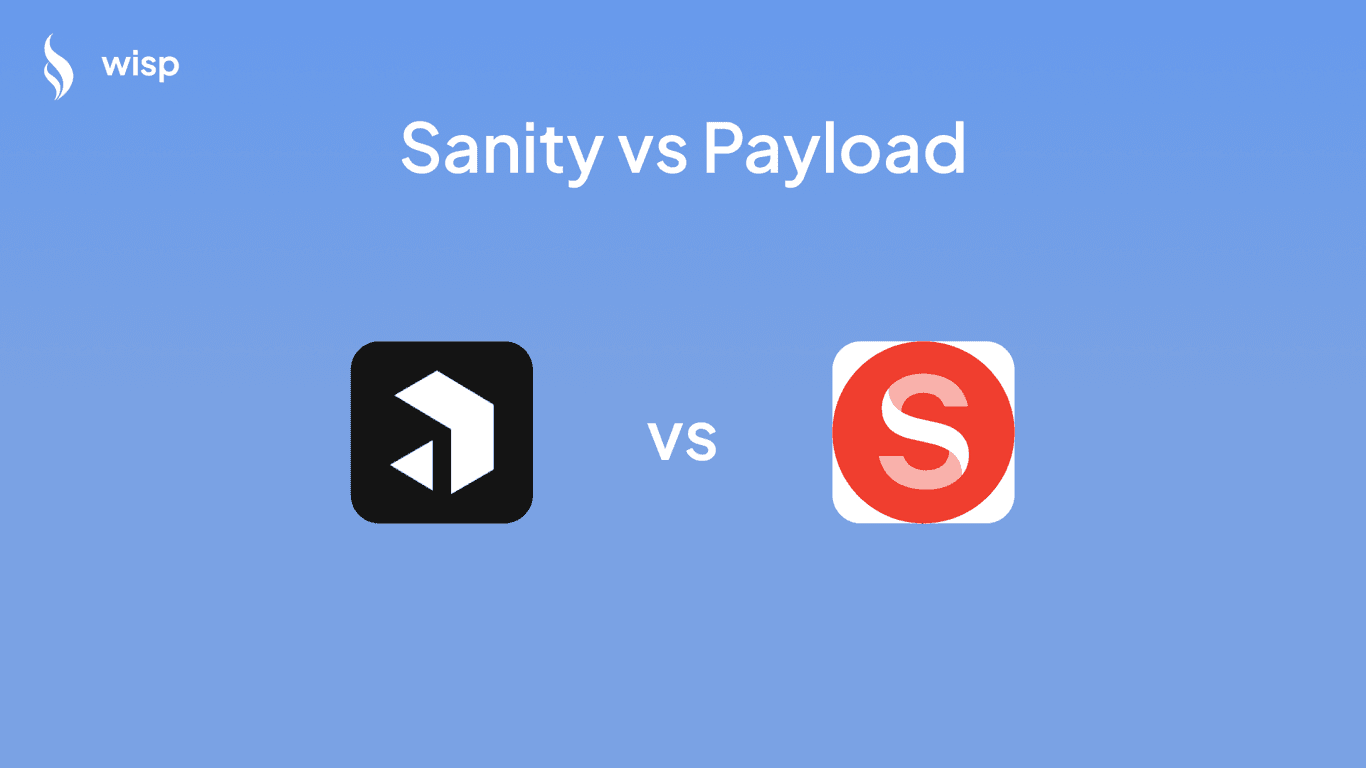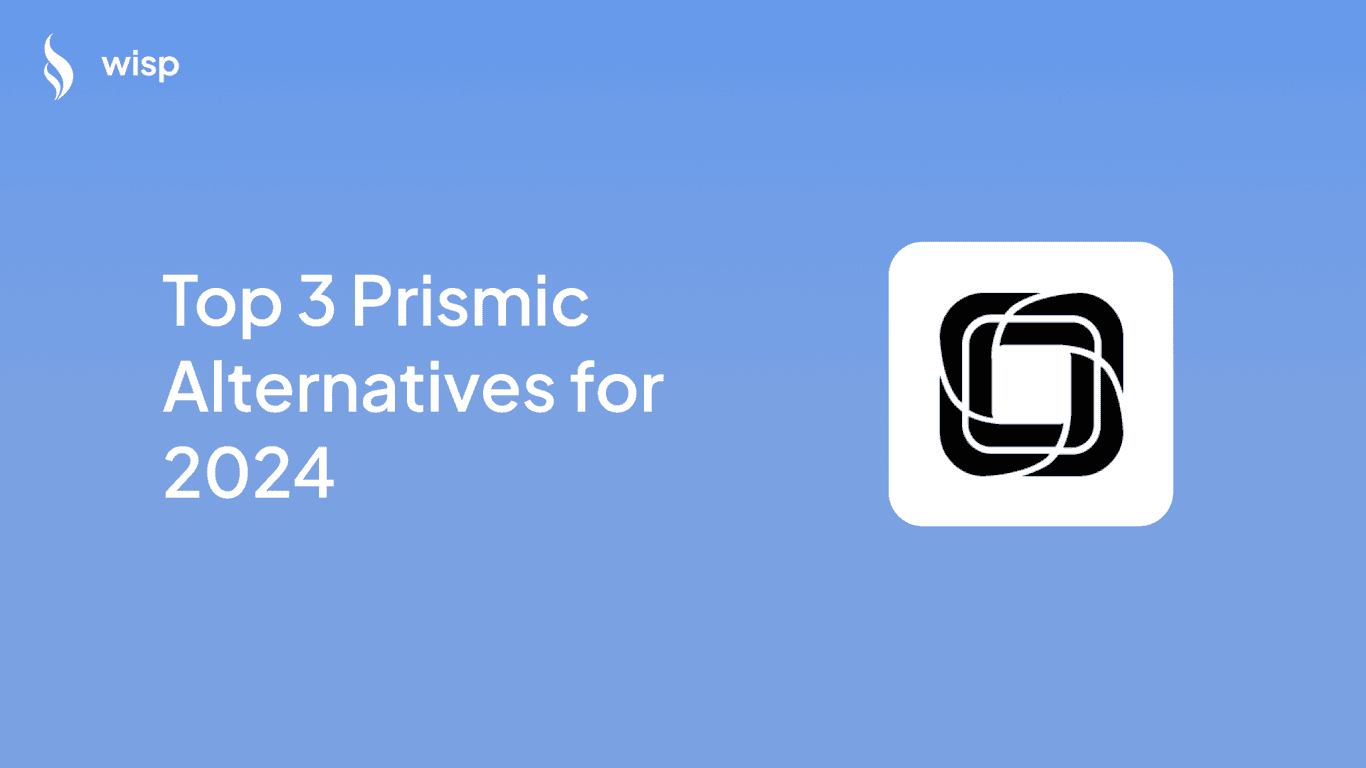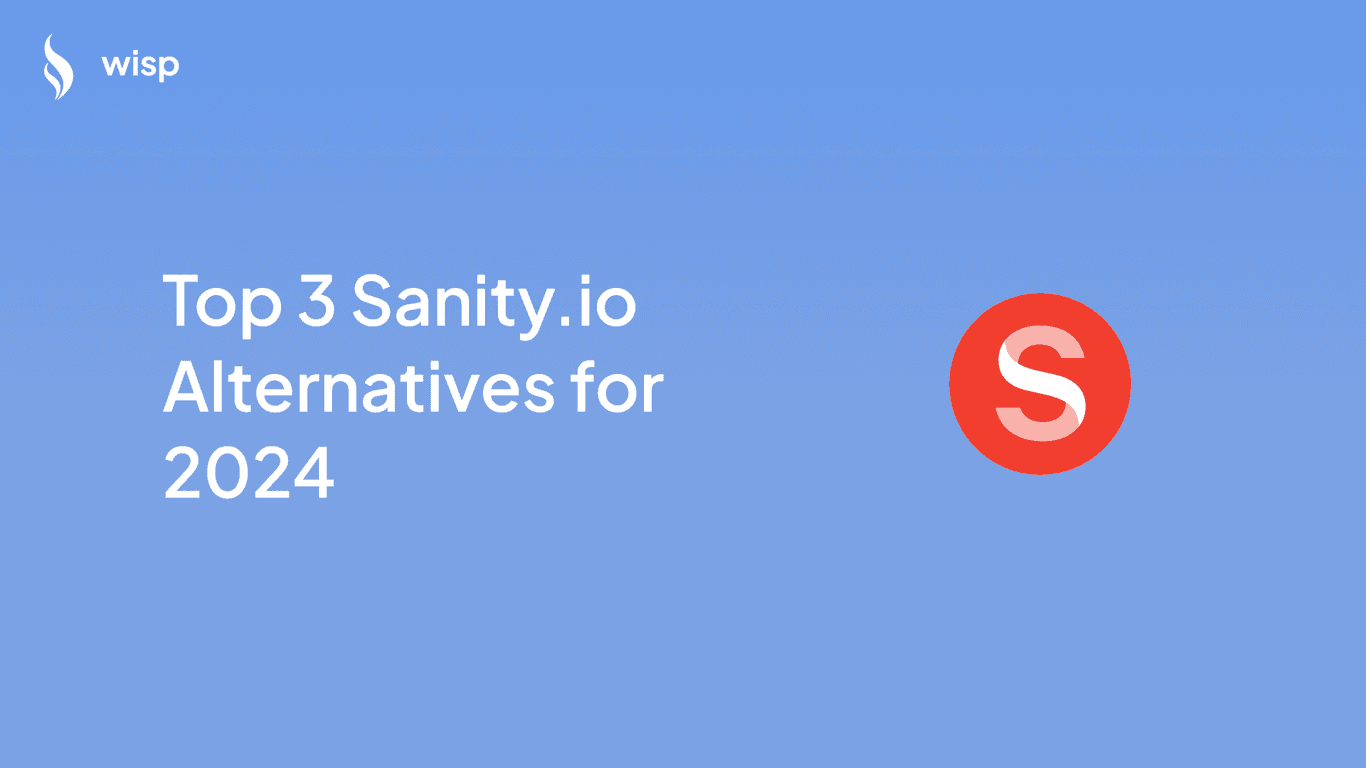
Introduction
Choosing the right headless content management systems (CMS) is crucial for businesses and developers aiming to deliver seamless and engaging digital experiences. Two of the leading options in this space are Prismic and Sanity, both known for their robust capabilities and innovative features. This article provides an in-depth comparison of Prismic and Sanity as of 2024, exploring their strengths, weaknesses, user experiences, and suitability for various use cases.
Overview of Prismic
Brief History and Background
Prismic is a well-known headless CMS that has gained popularity for its user-friendly interface and flexible pricing. It is designed to empower content teams to create and manage content independently, reducing reliance on developers. Prismic's unique approach to content management revolves around its 'Slices' feature, which allows for modular content creation.
Key Features and Capabilities
Slices and Custom TypesPrismic's Slices feature enables content creators to build dynamic and reusable components, making it easy to create rich pages without requiring extensive code changes. Custom Types allow for the definition of content models that suit specific project needs.
Preview and Editing InterfacePrismic offers a preview feature that allows content editors to see changes in real-time before publishing. The editing interface is designed to be intuitive, with a focus on providing a seamless experience for non-technical users.
Integration and API CapabilitiesPrismic provides robust API capabilities, enabling seamless integration with various frontend frameworks and third-party tools. The platform supports GraphQL and REST APIs, making it versatile for developers.
Pricing Structure
Prismic offers a range of pricing plans, catering to different business sizes and needs. The plans are structured to provide flexibility and scalability, with options for small teams as well as large enterprises.
User Reviews and Feedback
StrengthsUser-friendly interface that is easy to navigate
Efficient content modeling with Slices
Robust integration capabilities
Limited documentation and support
Higher pricing for advanced features
Some users report issues with the media library and asset management
Overview of Sanity
Brief History and Background
Sanity is another popular headless CMS known for its flexible content management and robust capabilities. It is designed to provide a seamless experience for both developers and content creators, with a strong focus on real-time collaboration and customization.
Key Features and Capabilities
Real-time CollaborationSanity offers real-time collaboration features, allowing multiple users to work on content simultaneously. This is particularly beneficial for large teams working on complex projects.
Customizable Editing EnvironmentSanity's editing environment is highly customizable, enabling users to tailor the interface to their specific needs. The platform supports custom input components and workflows, providing a high degree of flexibility.
Content Lake and API CapabilitiesSanity's Content Lake allows for the storage and retrieval of content in a highly structured manner. The platform offers powerful API capabilities, supporting both GraphQL and REST APIs for seamless integration with various applications.
Pricing Structure
Sanity's pricing plans are designed to accommodate different business needs, ranging from free tiers for small projects to enterprise-level plans with advanced features and support.
User Reviews and Feedback
StrengthsFlexible and highly customizable editing environment
Strong real-time collaboration capabilities
Robust API and integration options
Steeper learning curve for new users
Occasional issues with data synchronization and schema updates
Head-to-Head Comparison
Ease of Use
Editorial ExperiencePrismic is praised for its intuitive interface, making it easy for content creators to manage and publish content without needing extensive technical knowledge. The Slices feature provides a modular approach to content creation, allowing for flexibility and ease of use.
Sanity, on the other hand, offers a highly customizable editing environment, which can be tailored to fit specific workflows and requirements. However, this level of customization comes with a steeper learning curve, which may be challenging for new users.
Developer ExperienceBoth Prismic and Sanity offer robust API capabilities, making them suitable for developers. Prismic's integration with popular frontend frameworks and support for GraphQL and REST APIs make it a versatile option. Sanity's flexible content modeling and real-time collaboration features provide a powerful toolkit for developers, although the platform may require more initial setup and configuration.
Flexibility and Customization
Prismic and Sanity both excel in flexibility and customization, but they approach it differently. Prismic's Slices and Custom Types allow for modular content creation and efficient content management. Sanity's highly customizable editing environment and support for custom input components provide a high degree of flexibility, making it suitable for complex projects with specific requirements.
Performance and Reliability
Both platforms are known for their performance and reliability. Prismic offers a stable and efficient CMS experience, with robust integration capabilities and efficient content delivery. Sanity's real-time collaboration and Content Lake ensure that content is always up-to-date and accessible, although some users have reported occasional issues with data synchronization.
Scalability
Prismic and Sanity are both scalable solutions, suitable for small teams as well as large enterprises. Prismic's pricing plans and modular content creation features make it a good choice for growing businesses. Sanity's customizable editing environment and real-time collaboration features make it ideal for large teams working on complex projects.
Pricing and Cost Efficiency
Prismic offers flexible pricing plans that cater to different business sizes and needs, with options for small teams as well as large enterprises. Sanity's pricing plans also offer a range of options, from free tiers for small projects to enterprise-level plans with advanced features and support. The choice between Prismic and Sanity may come down to the specific needs and budget of the business.
User Experiences and Case Studies
Real-World Examples of Businesses Using Prismic
Prismic has been adopted by various businesses across different industries, including e-commerce, media, and technology. Companies appreciate the platform's user-friendly interface and modular content creation features, which allow for efficient content management and quick project turnaround.
Real-World Examples of Businesses Using Sanity
Sanity is used by organizations ranging from small startups to large enterprises, including companies in the tech and publishing sectors. Users highlight the platform's flexibility and real-time collaboration features, which enable teams to work efficiently on complex projects.
Comparative Analysis Based on User Reviews and Success Stories
User reviews and case studies highlight the strengths and weaknesses of both platforms. Prismic is often praised for its ease of use and efficient content management, while Sanity is appreciated for its flexibility and collaborative features. Both platforms have their unique advantages, making them suitable for different use cases.
Additional Alternatives
While Prismic and Sanity are both excellent headless CMS options, there are other notable alternatives worth considering. Contentful, Storyblok, and ButterCMS are popular choices, each offering unique features and advantages.
Contentful: Known for its flexible content modeling and robust API capabilities, Contentful is ideal for enterprise-level projects and complex content management needs.
Storyblok: With its visual editor and modular content creation features, Storyblok provides a user-friendly experience for both developers and content creators.
ButterCMS: Offering an intuitive interface and flexible pricing options, ButterCMS is a good choice for small to medium-sized businesses looking for a straightforward CMS solution.
Recommending Wisp CMS
Brief Introduction to Wisp CMS
Wisp CMS is a delightfully simple blogging CMS designed to provide a first-class editorial experience. It offers a clean and focused writing environment, making it ideal for content creators who want to focus on storytelling without distractions.
Unique Advantages of Wisp CMS
User-Centric Design: Wisp CMS provides a clean and intuitive interface that eliminates distractions, allowing content creators to focus on their work.
Easy Setup for Developers: With seamless headless CMS architecture, Wisp CMS can be quickly set up and integrated with popular frontend frameworks like Next.js and Vue.js.
Powerful Content API: Wisp CMS offers a robust Content API that enables efficient content management and delivery.
Why Wisp CMS is Ideal for Small Teams and Startups
Wisp CMS is designed to be simple and easy to use, making it a great choice for small teams and startups. The platform provides all the essential features needed for efficient content management, without the complexity of more advanced CMS options. Additionally, Wisp CMS is scalable, allowing it to grow with your team.
Try wisp out!
To experience a distraction-free editor and streamline your content management process, check out Wisp CMS or try its intuitive editor here.
Conclusion
In summary, both Prismic and Sanity offer robust and flexible headless CMS solutions, each with its unique strengths and weaknesses. Prismic is known for its user-friendly interface and efficient content management features, while Sanity stands out with its flexible editing environment and real-time collaboration capabilities. The choice between the two will depend on your specific needs and preferences.
For those looking for a simple and user-friendly CMS tailored to small teams and startups, Wisp CMS is an excellent alternative worth considering.



